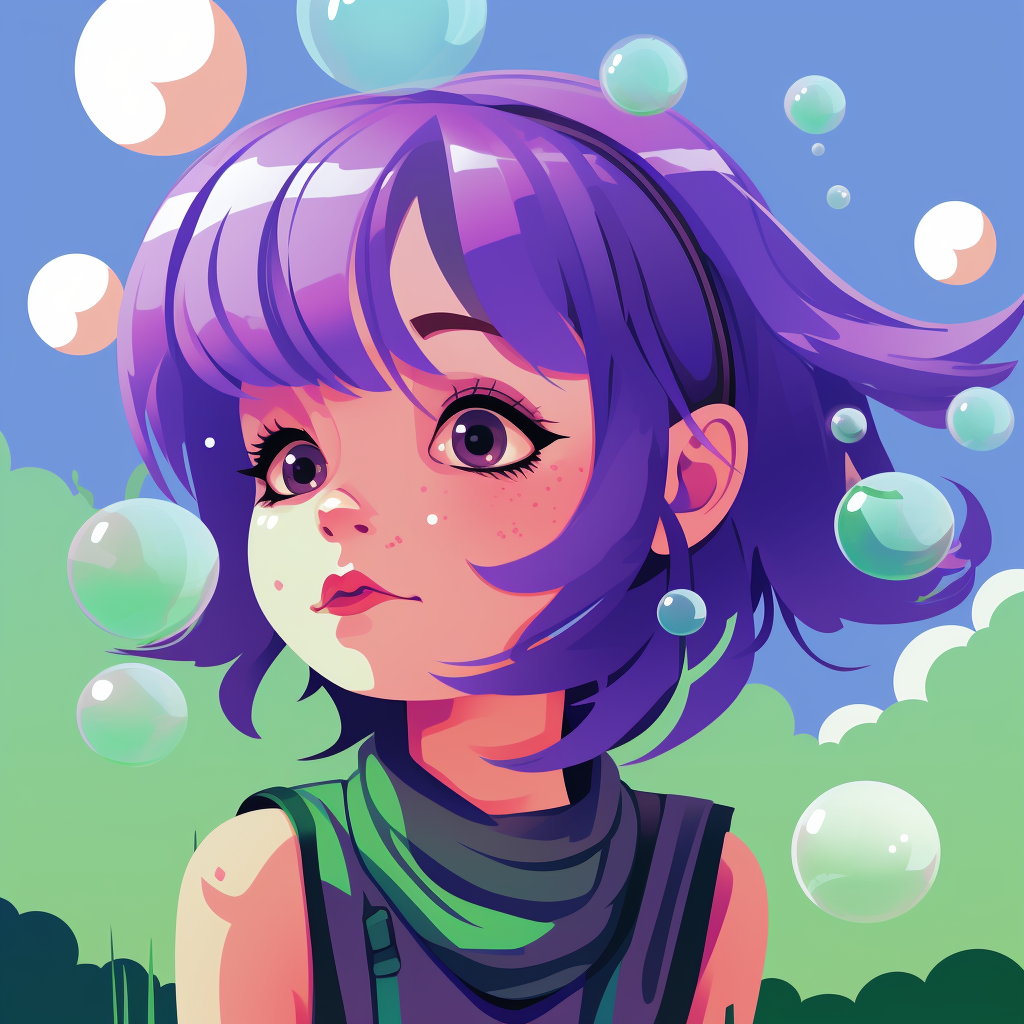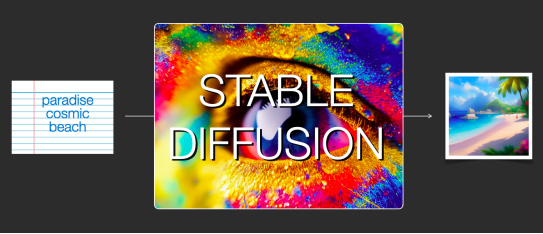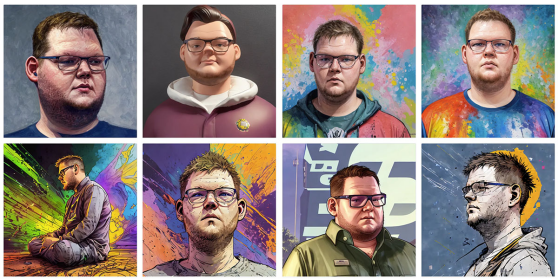Unveiling Stable Diffusion Technology: The Technology Behind Text-to-Image Generation

Stable Diffusion is a deep learning model for text-to-image generation based on diffusion technology, first introduced in 2022. This generative artificial intelligence technology is the flagship product of Stability AI and is considered part of the current AI boom. What exactly is it? Let’s delve into this technology that transforms text into images and explore its underlying principles and significance.
What is Stable Diffusion?
Stable Diffusion is an open-source machine learning framework that generates unique and realistic images based on user text and image prompts. Since its launch in 2022, it has not only generated static images but can also create videos and animations. By combining variational autoencoders with diffusion models, this technology can convert text into complex visual representations, representing a significant advancement in the field of generative AI. Creators, designers, and developers have found a free and open tool for image creation, allowing them to create anything from realistic photos to artistic works of various styles with simple text prompts.

How Does Stable Diffusion Work?
As a diffusion model, Stable Diffusion differs from many other image generation models. Ideally, the diffusion model uses Gaussian noise to encode images, then utilizes noise predictors and reverse diffusion processes to reconstruct the images. The uniqueness of Stable Diffusion lies in its use of latent space rather than pixel space for images.
The reason behind this is that a 512x512 resolution color image has 786,432 possible values. In contrast, the compressed images used by Stable Diffusion have only 16,384 values, reducing processing demands by about 48 times. This means you can smoothly use Stable Diffusion on a desktop equipped with an 8GB RAM NVIDIA GPU. This smaller latent space is effective because natural images are not random. Stable Diffusion uses the variational autoencoder (VAE) files in the decoder to render detailed features like eyes.
The training dataset for the model is collected from LAION and Common Crawl, including the LAION-Aesthetics v2.6 image dataset, which contains images with aesthetic scores of 6 or higher.
Why is Stable Diffusion Important?
The importance of Stable Diffusion lies in its accessibility and user-friendliness. It can run on consumer-grade graphics cards, allowing anyone to download the model and generate custom images for the first time. Users can control key hyperparameters, such as the number of denoising steps and the amount of noise applied. Additionally, the process of creating images is very straightforward, requiring no additional information. Moreover, the Stable Diffusion user community is very active, providing many related documents and tutorials to refer to. The software version is governed by the Creative ML OpenRail-M license, allowing users to use, modify, and redistribute modified software.
What Architecture Does Stable Diffusion Use?
The main architectural components of Stable Diffusion include the variational autoencoder, forward and reverse diffusion, noise predictor, and text conditioning.
Variational Autoencoder (VAE)
The VAE in the Stable Diffusion architecture is used to learn the distribution of training images. It encodes the input images into a low-dimensional latent space to capture their essential features. This encoding process allows the model to generate new images by sampling from latent space, effectively learning how to reproduce the diversity and complexity of the input data. VAE is crucial for the model's ability to generate high-quality, diverse images.
Forward Diffusion
In the forward diffusion process, Stable Diffusion gradually adds Gaussian noise to the image until the final image consists only of random noise. The original image cannot be recognized from the noise-filled output. Through fine control of this process, the model learns and understands the underlying structure of the images.
Reverse Diffusion
During the reverse diffusion phase, Stable Diffusion performs the inverse of the forward process. Starting from random noise, the process gradually removes the noise and synthesizes an image that matches the provided text prompt. This phase is critical as it utilizes the learned representation to guide the reconstruction of the noise into coherent visual content. Through a series of iterations, the model fine-tunes details, adjusts colors, shapes, and textures, ensuring the generated results are consistent with the textual description.
Noise Predictor (U-Net)
The noise predictor is key to image denoising. Stable Diffusion uses a U-Net model for this denoising process. U-Net was initially designed for biomedical image segmentation, and Stable Diffusion employs a residual neural network (ResNet) model developed in the field of computer vision. U-Net can effectively handle both overall structure and fine details, ensuring that the generated images closely match user requirements.
Text Conditioning
Text conditioning is the most common form of prompt adjustment. The CLIP tokenizer analyzes each word in the text prompt and embeds the data into a vector of 768 values. Up to 75 tokens can be used in the prompt. Stable Diffusion transfers these prompts from the text encoder to the U-Net noise predictor through a text transformer. By setting the seed with a random number generator, different images can be generated in latent space, ensuring that the outputs are not merely random but closely related to the themes, content, and styles of the input text description.
What Can Stable Diffusion Do?
In terms of text-to-image generation, Stable Diffusion represents a significant technological advancement. Compared to other text-to-image models, Stable Diffusion is more open and requires lower processing capabilities. Its functions include:
- Text-to-Image Generation: This is the most common use of Stable Diffusion. Users simply input text prompts to generate images and can create different effects by adjusting the random generator's seed or altering the denoising schedule.
- Image-to-Image Generation: By combining an input image and text prompts, users can generate new images based on existing ones, typically by starting with a sketch.
- Creating Graphics, Illustrations, and Logos: With diverse prompts, users can create illustrations and logos in various styles. While sketches can guide the creation, the final output can be unpredictable.
- Image Editing and Restorations: Stable Diffusion can also be used for image editing and restoration. After loading images into an AI editor, users can cover parts they want to modify with an eraser brush, then use generated prompts to define targets for editing or redrawing, such as restoring old photos, removing objects from images, altering subject characteristics, and adding new elements.
- Video Creation: With features like Deforum, Stable Diffusion can also create short video clips and animations, even adding different styles to films. Creating animations from static photos by simulating motion effects (such as flowing water) is another application.
Why Train Your Own Model?
Fine-tuning the base model of Stable Diffusion can enable it to generate more specialized images tailored to specific needs or styles, allowing for personalization and refinement. A commonly used fine-tuning method is Dreambooth, where you can train the base model using supplementary datasets focused on specific themes (such as wildlife), allowing the fine-tuned model to generate images that closely match expected outcomes with minimal effort, achieving higher accuracy and style consistency.
This fine-tuning process transforms the general base model into a dedicated one that can understand and replicate specific visual styles or themes with high fidelity. Advanced techniques for creating fine-tuned models (like LoRA local attention and LyCORIS) further narrow the model's focus to generate images with highly specific styles. For instance, users can inject fictional characters into visuals, modify character outfits, add specific elements to backgrounds, or incorporate objects like cars and buildings. Jake Dahn demonstrated how to utilize LoRA to fine-tune the model with images he personally captured, generating detailed self-portraits in various styles.

Use XXAI to Optimize Your AI Infrastructure
XXAI automates resource management and orchestration, reducing the costs of training large-scale language models (LLMs) and other computationally intensive models. With XXAI, users can automatically run any number of resource-intensive experiments based on their needs. In an upcoming product upgrade, XXAI will continue to integrate 13 popular AI models including Perplexity and Grok 2 based on the existing 5 AI models while keeping the price unchanged (as low as $9.99 per month), so that users can solve various problems in an integrated way, further improving the user experience and problem-solving capabilities. This integrated capability will provide users with more options and flexibility, enabling them to be more handy in complex machine learning environments.